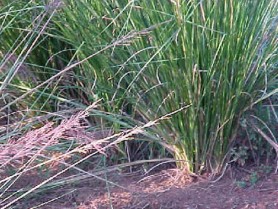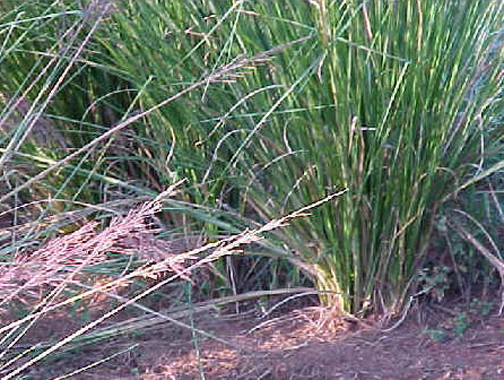The use of Vetiver grass as a form of sea defence protection may be considered by the authorities but planting of the perennial grass will have to be tested first before widespread planting can commence.

This is according to Agriculture Minister Robert Persaud who told this newspaper last week when asked for a comment on use of the plant as a sea defence protector. He stated that the authorities are studying the use of the plant. In this regard, the Mon Repos Beach area has been identified as an excellent site for planting.
According to the Agriculture Minister, experimental areas will be established with the assistance of a mangrove specialist and according to him different methods of planting will be tried.
He noted that the perennial grass has “great potential in the area of mud bank stabilization”.
According to Persaud, the plant is an effective, low cost bio- engineering technology that strengthens infrastructure protection and marsh replenishment by reliably enhancing control over soil and water management. He stated that the concept behind the plant’s ability as a form of sea defence is planting Vetiver in a geometric or natural pattern that reinforces the dynamic processes of flow and deposition.
Vetiver is a uniquely dense, erect, deeply rooted clump grass that is non-fertile and non-invasive. Several observers have stated that the use of the grass, which is from the same family as the lemon grass, also known as the fever grass, can be adopted once its use becomes known. Persons will understand its importance and may be able to plant it, one person stated.
The grass, whose roots are matted together, can grow as high as 1.5 meters and its roots grows downwards, between 2-4 meters in depth, making the grass an excellent erosion control plant in the tropical climate. It is also utilized for perfumery, aromatherapy and medicinal purposes in some parts of the world.
For more than a year now, the virtues of the Vetiver grass have been extolled by Joe Coxall, a commenter on Stabroek News’ website. In one of his posts in December 2008, he said “this grass can grow anywhere, but it does not spread, instead it grows thick root bundles over twelve feet long, straight down into the earth.
“The grass itself is good cow fodder, the roots will hold the soil to the land and stop the silting. They say that you can also extract oils from the roots, and it can be twisted into string. You can make high mud embankments and this grass will hold it together.”
Engineer Charles Sohan, when contacted for a comment on the issue, stated that there is nowhere along Guyana’s coastline where plants can be utilized today as a form of sea defence. He said, as he has stated in the letter columns of this newspaper, that the objective of the authorities should be to pursue sea and river defence infrastructure works of a more stable and permanent nature which have stood the test of time.
Minister Persaud, while alluding to the vulnerability of Guyana’s coastland to flooding and the high cost to maintain same during a workshop on mangrove restoration at the Cheddi Jagan Research Centre on March 5, stated that there are other “least cost” techniques which the Mangrove Management Implementation Committee (MMIC) could examine, listing the cultivation of the Vetiver grass as an option which can be considered.
Meanwhile, the Agriculture Minister outlined several areas which the Mangrove restoration project, for which some $125M has been allocated in this year’s budget, will adopt in accordance with the Ecological Restoration of Mangroves Protocol as the approach to planting of the tropical shrub. These will include,
-understanding of the normal hydrologic patterns controlling the distribution and successful establishment and growth of the targeted mangrove species,
-the determination of what modifications and stresses of the previous mangrove environment are currently preventing natural secondary succession, as well as,
-the design of the restoration programme to first establish the appropriate hydrology at an appropriate restoration site, and then utilize natural volunteer mangrove propagules for plant establishment.
The MMIC, which was formed last month, is spearheading the restoration project. The committee, comprises ten relevant agencies inclusive of the National Agricul-tural Research Institute (NARI) which is coordinating the technical aspect of the implementation of the restoration programme.
NARI has since advertised for a Community Development Specialist for the Guyana Mangrove Resto-ration Project.

